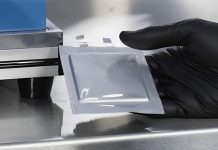
Researchers from the University of Sydney’s School of Civil Engineering have developed an optimised method for recycling carbon fibre reinforced polymer (CFRP) composites while maintaining 90% of their original strength.
CRFP composites are non-biodegradable materials which, until now, have lacked a viable recycling method.
Found in products such as wind turbines, aeroplane parts, cars, ships, and everyday technology such as laptops and mobile phones, they are typically disposed of in landfills or by incineration, which pose significant threats to both the environment and public health.
The study’s lead researcher Dr Ali Hadigheh noted that the vast majority of existing recycling methods also cause a major reduction in the mechanical and physical properties of the recovered material, weakening its core functionality.
“Most recycling processes diminish mechanical or physical properties of materials,” Dr Hadigheh said.
“Until now, it has been impossible to continuously recycle products made of carbon fibres. Given that most recycling involves shredding, cutting or grinding, fibres are worn out, decreasing a future product’s viability.
“This presents a huge challenge and threat to our environment, as it has led to the production of virgin carbon fibre which contributes significantly to greenhouse gas emissions.
“To combat this issue and to support a true circular economy, we developed an efficient and cost-effective method for recycling carbon fibre, which is present in tablets through to BMWs.”
To do this, the research team used a two phased, optimised process. The first step is called “pyrolysis”, which breaks down a material using heat, but significantly chars the materials which prevents it from developing a good bond with a resin matrix. The second process, oxidation, uses high temperatures to remove this char.
“Pyrolysis and oxidation alone are not enough to preserve carbon fibres and these processes have existed for some time already,” Dr Hadigheh said.
“To ensure a high quality recovery and economic efficiency, thermal decomposition of CFRPs need to be guided by analysing the energy required to initiate a chemical reaction in the composit, and separate carbon fibres from the surrounding resin matrix.
“What makes our method so successful is that we have added specific parameters – such as temperature, heating rate, atmosphere or time spent being oxidised and heated – that preserve the functionality of carbon fibre.
“We embarked on the project with the aim of producing high grade, low cost structural materials made from recycled carbon fibre composites, for use in industries from aerospace and automotive through to sporting goods and renewable energy and construction.”
The research was supported by the Australian Government through the Australian Research Council’s Discovery Early Career Researcher Award (DECRA) fellowship scheme, which was received by Dr Hadigheh.




















